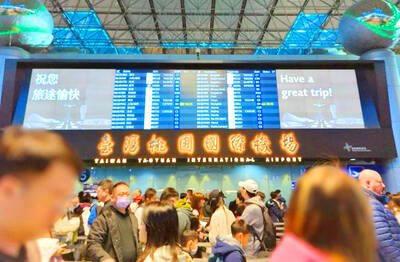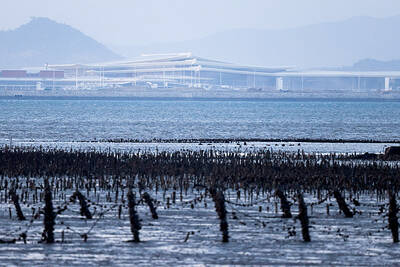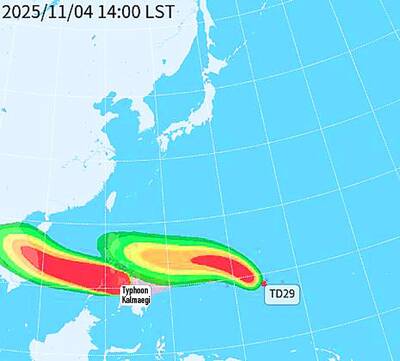The first submarine cable directly linking Taiwan and China was completed on Friday, with the telecommunications operators who built it expecting it to improve cross-strait telecommunications quality and to cut communications costs.
The Taiwan Strait Express-1, which links Fuzhou in China’s Fujian Province with Tamsui in northern Taiwan, is 270km long.
Builders adopted state-of-the-art fiber-optic technology for the system and routed it in a way that avoids the faultline region, to minimize the risks of possible damage from natural disasters such as earthquakes.
In future, communications between Taiwan and China will no longer have to be rerouted via the Asia-Euro Under-sea Optical Cable, the China-US Cable Network or the Asia Pacific Cable Network 2.
Both sides of the Taiwan Strait witnessed the completion of the system through a video hookup.
Douglas Hsu (徐旭東), chairman of Taiwan’s Far EasTone, said that the completion of the system will make cross-strait communications faster and more stable, and create a win-win situation for operators and users.
Telecoms operators suggested this was just the beginning of further cooperation between Taiwan and China in the sector.
Taiwan Mobile chairman Richard Tsai (蔡明興) said the system will provide a faster and higher-quality service for Taiwanese businessmen operating in China.
“Taiwan Mobile is planning further cooperation with China’s telecommunications operators on cloud computing services to tap into the vast business opportunities in digital convergence,” Tsai said.
China Mobile chief executive officer Li Yue (李躍) said that the latest system will not only upgrade the quality of cross-strait communications, but will also save costs for operators.

Three Taiwanese airlines have prohibited passengers from packing Bluetooth earbuds and their charger cases in checked luggage. EVA Air and Uni Air said that Bluetooth earbuds and charger cases are categorized as portable electronic devices, which should be switched off if they are placed in checked luggage based on international aviation safety regulations. They must not be in standby or sleep mode. However, as charging would continue when earbuds are placed in the charger cases, which would contravene international aviation regulations, their cases must be carried as hand luggage, they said. Tigerair Taiwan said that earbud charger cases are equipped

Foreign travelers entering Taiwan on a short layover via Taiwan Taoyuan International Airport are receiving NT$600 gift vouchers from yesterday, the Tourism Administration said, adding that it hopes the incentive would boost tourism consumption at the airport. The program, which allows travelers holding non-Taiwan passports who enter the country during a layover of up to 24 hours to claim a voucher, aims to promote attractions at the airport, the agency said in a statement on Friday. To participate, travelers must sign up on the campaign Web site, the agency said. They can then present their passport and boarding pass for their connecting international

UNILATERAL MOVES: Officials have raised concerns that Beijing could try to exert economic control over Kinmen in a key development plan next year The Civil Aviation Administration (CAA) yesterday said that China has so far failed to provide any information about a new airport expected to open next year that is less than 10km from a Taiwanese airport, raising flight safety concerns. Xiamen Xiangan International Airport is only about 3km at its closest point from the islands in Kinmen County — the scene of on-off fighting during the Cold War — and construction work can be seen and heard clearly from the Taiwan side. In a written statement sent to Reuters, the CAA said that airports close to each other need detailed advanced

WEATHER Typhoon forming: CWA A tropical depression is expected to form into a typhoon as early as today, the Central Weather Administration (CWA) said yesterday, adding that the storm’s path remains uncertain. Before the weekend, it would move toward the Philippines, the agency said. Some time around Monday next week, it might reach a turning point, either veering north toward waters east of Taiwan or continuing westward across the Philippines, the CWA said. Meanwhile, the eye of Typhoon Kalmaegi was 1,310km south-southeast of Oluanpi (鵝鑾鼻), Taiwan’s southernmost point, as of 2am yesterday, it said. The storm is forecast to move through central